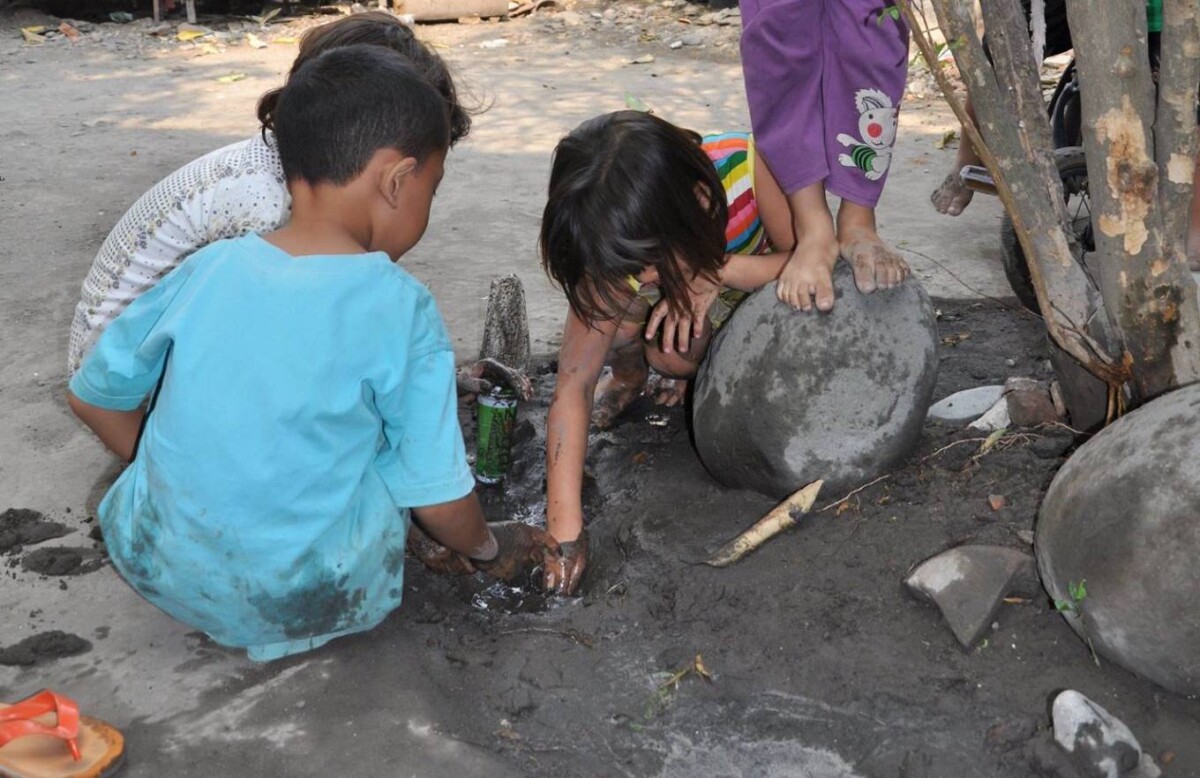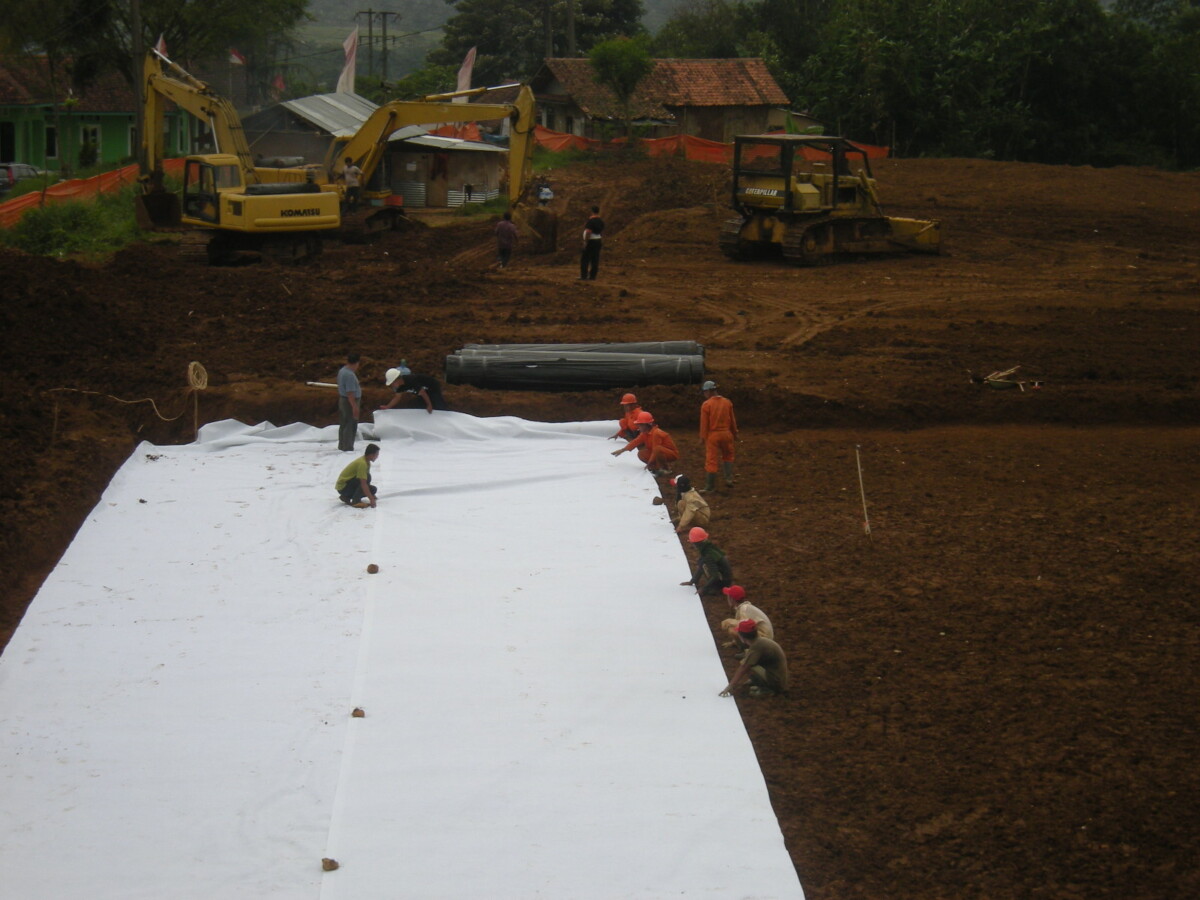Yayasan Pure Earth Indonesia Educational Materials Translated From Bahasa
Lead is highly toxic due to its ability to interfere with various biological processes at the cellular and molecular levels. Here are several reasons why lead is particularly harmful to human health:
1. Mimics essential minerals
Lead can mimic calcium and zinc, which are vital minerals in the body. This allows lead to infiltrate critical biological processes, including those in the nervous system, where calcium signaling is crucial. By substituting for these minerals, lead disrupts normal cellular functions, including enzyme activity, neurotransmitter release, and cellular signaling.
2. Neurotoxicity
Lead is particularly toxic to the nervous system. It can cross the blood-brain barrier and accumulate in the brain, where it disrupts neurotransmitter function, impairs synaptic connections, and damages neuronal cells. This is why lead exposure is especially harmful to children, whose brains are still developing.
3. Bioaccumulation
Lead accumulates in the body over time and is stored in bones and teeth, where it can remain for decades. This long half-life means that even low-level exposure over time can result in significant body burdens of lead. During periods of increased bone turnover, such as pregnancy or osteoporosis, lead can be released back into the bloodstream, causing renewed toxicity.
4. Enzyme inhibition
Lead inhibits several enzymes that are essential for normal metabolic processes. It also affects enzymes critical for DNA synthesis and repair, which can disrupt cell division and growth.
5. Disrupts the metabolism of calcium
Calcium is essential for many cellular processes, including muscle contraction, neurotransmitter release, and bone formation. Lead disrupts calcium homeostasis by competing with calcium ions and interfering with calcium-dependent processes. This disruption can cause various issues, including muscle weakness, bone density loss, and impaired neural communication.
6. Induces oxidative stress
Lead can interfere with cell signaling pathways and the regulation of programmed cell death. It also induces oxidative stress leading to cell injury and death which contributes to developmental and degenerative diseases.

HEALTH IMPACTS OF LEAD EXPOSURE
Those mechanisms collectively make lead a potent and widespread toxin, with the ability to cause extensive damage across multiple organ systems. Lead exposure occurs when lead accumulates in the body, often over months or years. It can have severe health effects, especially on children. Below are some of the health impacts of lead exposure:
1. Neurological Effects
a. Cognitive impairment: Lead exposure can cause significant damage to the brain and nervous system, leading to cognitive deficits, including reduced IQ, attention disorders, and learning disabilities. In children, even low levels of lead exposure have been associated with decreased academic performance and behavioral issues.
b. Behavioral problems: Increased irritability, hyperactivity, and aggression have been observed in children with elevated blood lead levels.
c. Neurological disorders: In severe cases, lead exposure can result in encephalopathy, which may cause convulsions, coma, and even death.
2. Developmental Delays in Children
a. Stunting: Lead exposure may interfere with the physical growth and development of children, resulting in stunted growth.
b. Hearing and speech issues: Lead can also affect hearing abilities and speech development, further impacting a child’s learning and social interactions.
3. Cardiovascular Effects
Lead exposure has been linked to high blood pressure and related cardiovascular issues in adults. Even low levels of lead in the blood have been associated with increased blood pressure and a higher risk of hypertension.
4. Kidney Damage
Lead can accumulate in the kidneys, causing chronic kidney disease. This condition is more prevalent among individuals with prolonged exposure to lead, such as workers in certain industries.
5. Reproductive Health Issues
a. Fertility problems: Both men and women exposed to lead may experience fertility problems. Lead can impair sperm production and quality in men, and cause menstrual irregularities and reduced fertility in women.
b. Pregnancy complications: Pregnant women exposed to lead are at a higher risk of miscarriage, premature birth, and giving birth to babies with low birth weight. Lead can also cross the placental barrier, potentially harming the developing fetus and causing developmental issues.
6. Hematologic Effects
Lead interferes with the production of hemoglobin, the molecule in red blood cells that carries oxygen. This can result in anemia, characterized by fatigue, weakness, and pallor.
7. Bone and Teeth Issues
Lead can be stored in bones and teeth, acting as a reservoir that can release lead into the bloodstream long after the initial exposure has ceased. This can prolong the health effects and complicate treatment.
MORE HARMFUL TO CHILDREN

Lead exposure is particularly harmful to children due to several physiological and behavioral factors that increase their vulnerability compared to adults for several reasons:
1.Higher Absorption Rate
Children’s bodies absorb lead more efficiently than adults. According to the WHO, children can absorb up to 4-5 times more ingested lead. This higher absorption rate means that, even with similar levels of exposure, children end up with a greater burden of lead in their bodies.
2.Developing Nervous System
Lead exposure is especially damaging to the developing brains and nervous systems of children. The developing brain is more sensitive to the toxic effects of lead, which can disrupt brain development and lead to cognitive deficits, behavioral problems, and developmental delays. These effects can be irreversible and impact learning, memory, and behavior.
3. Behavioral Factors
Children are more likely to engage in hand-to-mouth and pica behavior, which is persistent eating of non-food items found in their environment such as toys, grass, soil and any other unusual objects. This behavior is particularly common in younger children, who are typically curious about the world around them by putting things in their mouths which in turns increase their risk of ingesting lead-contaminated dust, soil, or objects.
4. Longer Exposure Period
Children, especially those in environments with high lead exposure, can be affected over a longer period as they grow. Since lead accumulates in the body, prolonged exposure can lead to higher total body burdens over time, exacerbating health impacts.
5. Critical Periods of Development
There are critical periods during a child’s development when exposure to toxic substances like lead can cause the most damage. For instance, prenatal exposure to lead can affect fetal development, potentially leading to premature birth, low birth weight, and developmental issues.
6. Smaller Body Size
Due to their smaller body size, children have a higher dose of lead per unit of body weight compared to adults. This means that the same amount of lead can have a more significant toxic effect on a child than on an adult.
ENVIRONMENTAL IMPACTS OF LEAD EXPOSURE
Lead exposure has significant environmental impacts, affecting ecosystems, wildlife, and the overall health of the natural environment.
1. Soil Contamination
Lead is a heavy metal that does not degrade over time, leading to long-term contamination of soils. Once lead enters the soil, it can persist for decades, accumulating in the upper layers where it poses risks to plants, animals, and humans. This contamination can adversely affect soil microorganisms, which play a crucial role in nutrient cycling and maintaining soil health. This disruption can reduce soil fertility and affect plant growth.
2. Water Pollution
Lead can enter water bodies through industrial discharges, runoff from contaminated soils, and leaching from lead-containing infrastructure like pipes. This contamination can affect both surface and groundwater sources, posing risks to aquatic ecosystems and water supplies. Just like in the human body, lead can also accumulate in the bodies of aquatic organisms, including fish and invertebrates. This bioaccumulation can disrupt biological processes, affect reproduction and growth, and lead to toxicity in aquatic life.
3. Air Pollution
Lead particles can be released into the air through industrial processes, vehicle emissions, and the burning of lead-containing materials. These particles can travel long distances and settle on land and water, leading to widespread environmental contamination. Birds and other wildlife can inhale or ingest these lead particles, leading to poisoning.
4. Toxicity to Plants and Animals
Lead can inhibit photosynthesis, impair growth, and damage root systems in plants. Plants growing in lead-contaminated soils may absorb the metal, which can then enter the food chain. In animals, lead exposure can cause a range of health problems, including digestive issues, kidney damage, and neurological disorders. In severe cases, it can be fatal. Animals at higher trophic levels may experience greater impacts due to biomagnification, where lead concentrations increase up the food chain.
5. Ecosystem Disruption
The presence of lead in ecosystems can alter food webs by affecting the health and survival of various species. This can lead to changes in species composition and abundance, potentially disrupting ecosystem balance and function.
RISK MITIGATIONS OF LEAD EXPOSURE
Despite the lack of awareness among the general public in Indonesia, the issue of lead exposure is not new. Fortunately, in addition to greatly improved understanding of the issue, there has also been a proven range of effective solutions from other countries that we can learn and implement.
To mitigate the risks of lead exposure we have to involve a combination of public health strategies, environmental controls, and individual actions. Here are some key strategies for mitigating the risks of lead exposure:
1. Monitoring and Source Identification
Blood Lead Levels (BLLs) surveillance: Developing the capacity for blood lead testing at the national level is crucial. As the initial step to address an issue and to provide effective support, we need to first understand its scope, which in this case includes identifying who is affected by the lead exposure and to what extent. Enhanced and expanded monitoring and reporting, through the inclusion of blood lead testing will help identify affected children and enable the quick implementation of preventative measures to mitigate the toxic effects of lead.

Through the “Strengthening Health Systems to Reduce Lead Exposure” program, Pure Earth Indonesia partners with the Ministry of Health of Indonesia and Vital Strategies will carry out their first BLL Surveillance (SKTD) piloting activity in the second semester of 2024. This piloting activity aims to monitor BLL in children in Indonesia and understand the increasing prevalence of BLL in children, evaluate the capacity of existing resources, and test the feasibility of implementing national BLL surveillance. Learn more about the program here.
Local-level source identification: Understanding the sources of exposure allows for more targeted interventions. Assessments should be carried out at the household, school, and community levels to determine how children are exposed to lead.
In 2023, Pure Earth Indonesia in collaboration with various stakeholders conducted a study to analyze the prevalence and severity of elevated BLLs of children aged 1-5 years on the island of Java, Indonesia. A home-based assessment was also conducted as part of the study. Learn more about it here.
Identify contaminated sites: This involves setting standards and providing guidance to local authorities on criteria and managing the response. Once sites are identified, communities can be made aware of the dangers, potentially leading to avoidance of the site.
With the support from the European Commission, UNIDO, The World Bank, Green Cross Switzerland and others, Pure Earth established Toxic Sites Identification Program (TSIP) to locate, assess and document contaminated sites in low- and middle-income countries. Pure Earth and its in-country investigators have identified 1,450 sites in over 50 countries, including Indonesia, where lead is the primary pollutant.
2. Management, Treatment, and Remediation
Lead source removal and replacement: Once the source is identified, measures can be taken to prevent further contamination. For example, one of the most common sources of lead exposure is lead-based paint. Safely removing or sealing lead paint can significantly reduce the risk. Another example is replacing lead contaminated cookware with safer alternatives.
In the first semester of 2024, Pure Earth Indonesia conducted the “Study of Aluminum Cookware at Educational Institutions in Indonesia” to increase our understanding of the prevalence of lead exposure from use of metallic cookware. The study was carried out in selected orphanages in 4 locations, namely the Special Capital Region of Jakarta, Depok City, Bogor City, and Bandung. Pure Earth also hopes that the study could raise the awareness of lead exposure issues among educational institutions. As a part of the follow up of the study, Pure Earth Indonesia replaced the lead-contaminated aluminum cookwares owned by the orphanages identified during the study. Learn more about the study here.
Managing lead-containing waste: Proper disposal and recycling of lead-containing products, such as batteries, should be enforced to prevent environmental contamination. Recycling processes must follow strict regulations to minimize emissions and worker exposure.
Address and remediate toxic sites: Although each toxic site may have unique needs, there are generally established procedures and methods that are effective in cleaning up contaminated areas. These methods can include removing contaminated soil and waste, installing barrier cloths, paving or covering areas with clean fill, and planting grass and other vegetation.
In 2013 and 2014, Pure Earth Indonesia in collaboration with various actors including local and national government agencies remediated a toxic lead dump site that’s been used as a playground by children around the area.

3. Public Awareness and Education
Public health campaigns: Educating the public about the dangers of lead exposure and ways to prevent exposure is essential. This includes information on identifying potential sources of lead, safe cleaning practices, and proper nutrition to mitigate lead absorption.
Healthcare provider training: Medical professionals should be trained to recognize the signs of lead exposure and counsel patients on prevention, especially in high-risk communities.
Occupational safety measures: Workers in industries where lead exposure is a risk should follow safety protocols, including using personal protective equipment (PPE), proper ventilation, and hygiene practices to prevent bringing lead dust home.
4. Regulation and Policy Implementation
Governments play a crucial role in enforcing regulations that limit lead in household items, consumer products, gasoline, and industrial emissions. Policies such as banning lead in household paint and gasoline, for example, have significantly reduced lead exposure in many countries.
Several policies and regulations have been put into place regarding lead in Indonesia. However, many are limited and less-restricted or of voluntary nature. Therefore, to address the issue more seriously, in addition to putting into place the currently non-existing regulations, such as regulations on lead in cookware, the government needs to enforce more comprehensive and restrictive policies and regulations.
5. Individual Actions
Individuals can take several actions to prevent lead exposure, especially in their homes and communities.
Here are some practical steps:
Maintain a clean and safe home environment: Regularly clean floors, window sills, and other surfaces to reduce household dust. Use a wet mop or cloth, as dry dusting or sweeping can spread lead dust. When renovating an older home, take precautions to minimize lead dust. Use professionals trained in lead-safe work practices, and keep children and pregnant women away from the renovation area.
Practice good personal hygiene: Wash hands frequently, especially before eating, after playing outside, and after contact with potentially contaminated surfaces. This is particularly important for children, who are more likely to put their hands or objects in their mouths. When outside, keep children from playing in bare soil, which can be contaminated.
If working in a job with a high risk of lead exposure, change clothes and shoes before coming home to avoid bringing lead dust into your living environment.
Nutritious diet: A diet rich in calcium, iron, and vitamin C can help reduce the absorption of lead in the body. Foods like dairy products, lean meats, beans, and citrus fruits are beneficial.
Avoid products that may contain lead: Be cautious of the potential for lead in consumer products, such as pottery and cookware, cosmetics, toys, jewelry, and traditional medicines. It is important to check product recalls and safety information.
Monitor and educate: Stay informed about local sources of lead, such as industrial sites or community water supplies, and advocate for testing and cleanup efforts. Have children tested for lead exposure, especially if they live in older homes or areas with known lead contamination. Regular blood lead level tests can help detect exposure early. It is also important to educate family members, especially children, about avoiding potential sources of lead.
Those measures, when implemented effectively, can significantly reduce the prevalence of lead exposure and its associated health risks. Public health initiatives, combined with community engagement and individual actions, are critical to preventing lead exposure.
=== END===
References:
https://www.technavio.com/report/lead-acid-battery-market-size-in-indonesia-industry-analysis
https://www.env.go.jp/en/recycle/asian_net/Annual_Workshops/2017_PDF/Day1_S1/S1_09_Indonesia.pdf
https://www.who.int/news-room/fact-sheets/detail/lead-poisoning-and-health
https://www.unep.org/topics/chemicals-and-pollution-action/pollution-and-health/heavy-metals/lead
https://www.unicef.org/media/146756/file/Five_Actions_to_End_Childhood_Lead_Poisoning_2023.pdf
https://www.who.int/news-room/fact-sheets/detail/
https://inchesnetwork.net/fact-sheets/
https://www.atsdr.cdc.gov/toxprofiles/tp13.pdf
https://www.who.int/publications/i/item/childhood-lead-poisoning
https://www.who.int/publications/i/item/9789240037656
https://www.pureearth.org/rapid-market-screening-program/
https://www.atsdr.cdc.gov/csem/leadtoxicity/who_at_risk.html
https://www.who.int/news-room/fact-sheets/detail/lead-poisoning-and-health
https://www.lead.org.au/lanv1n2/lanv1n2-8.html
https://www.epa.gov/lead-air-pollution/basic-information-about-lead-air-pollution
https://www.who.int/news-room/fact-sheets/detail/lead-poisoning-and-health





